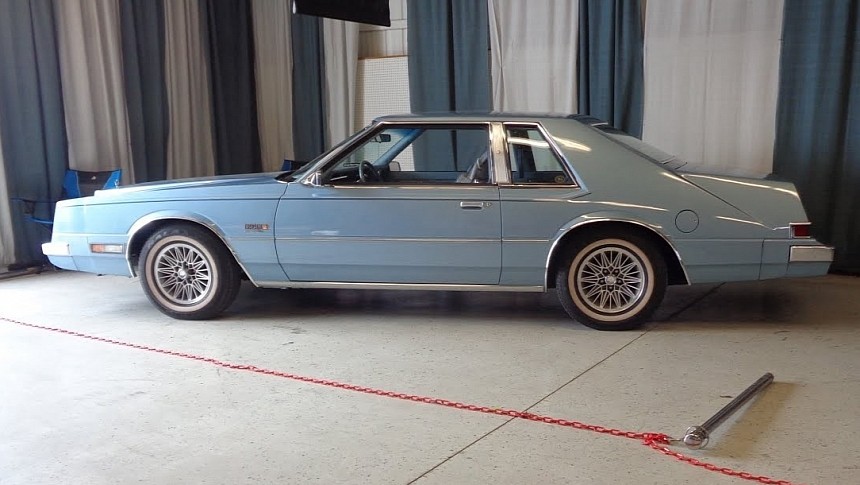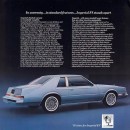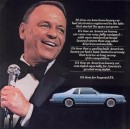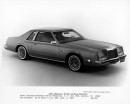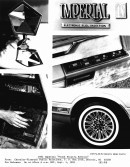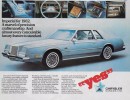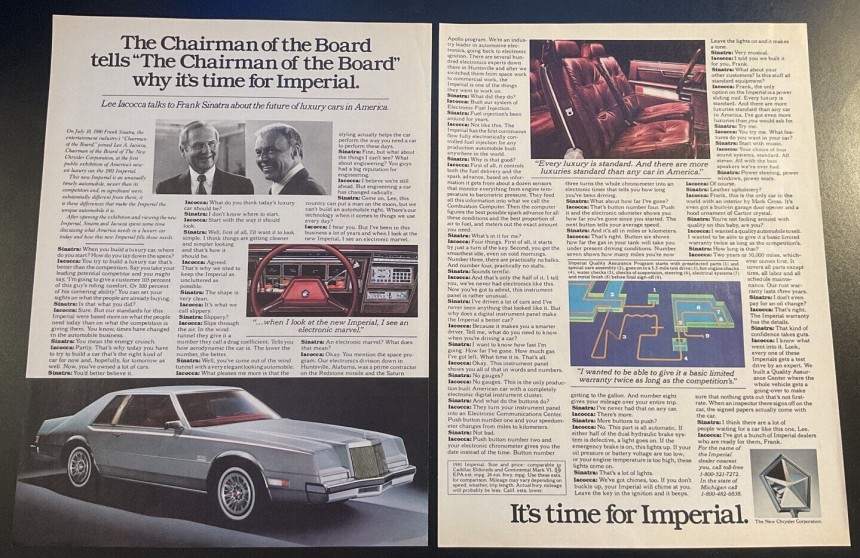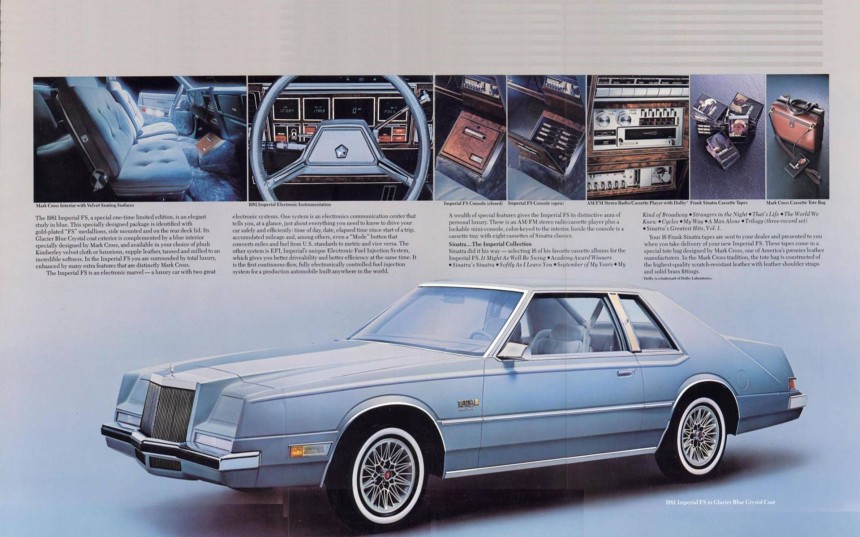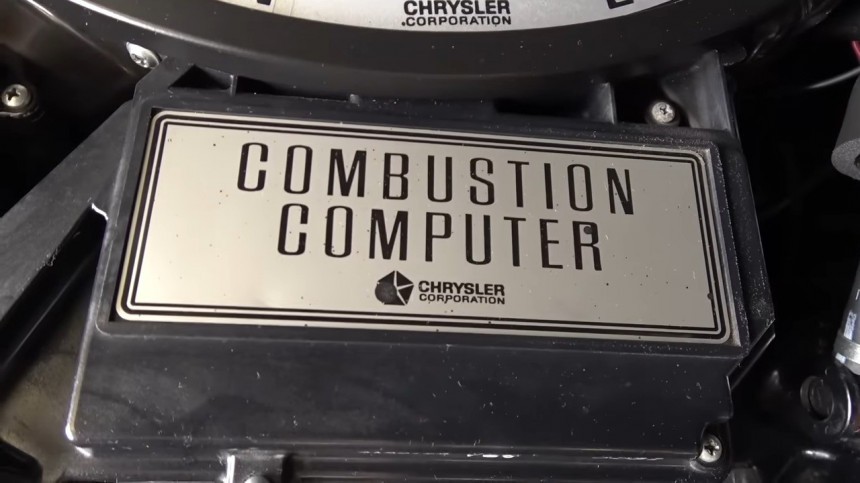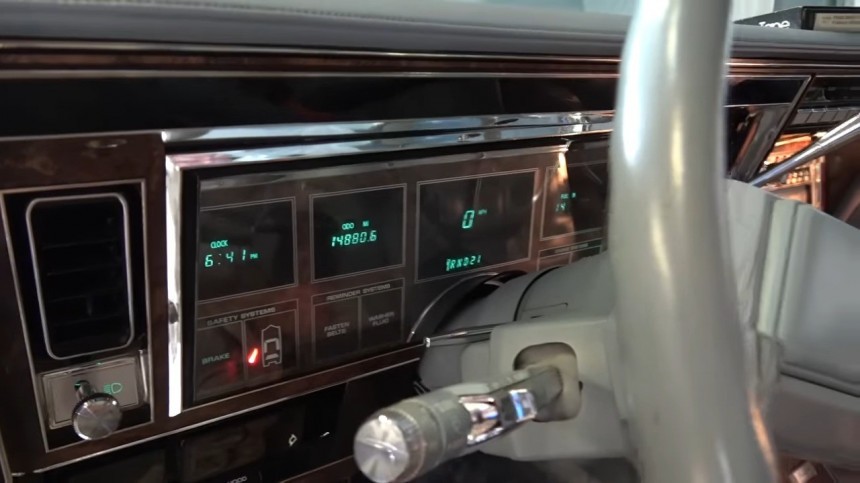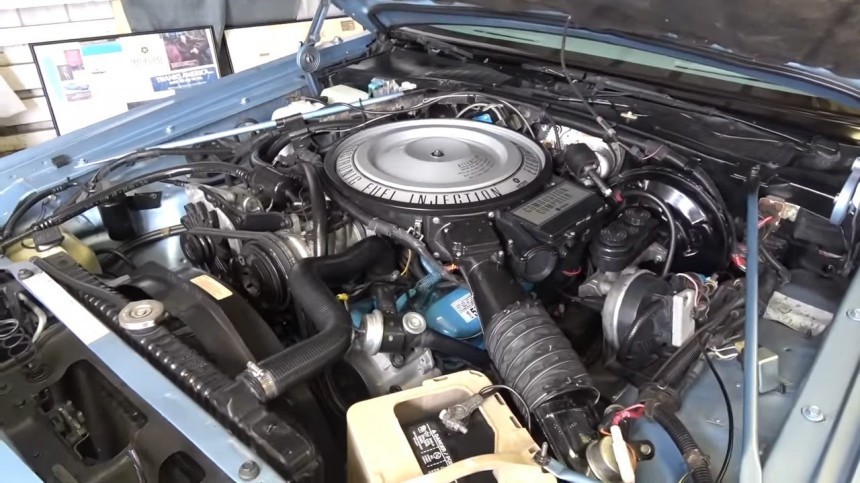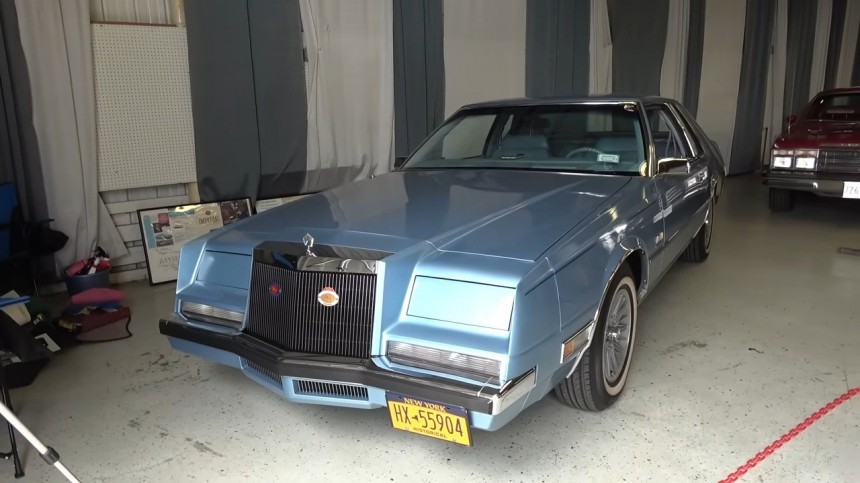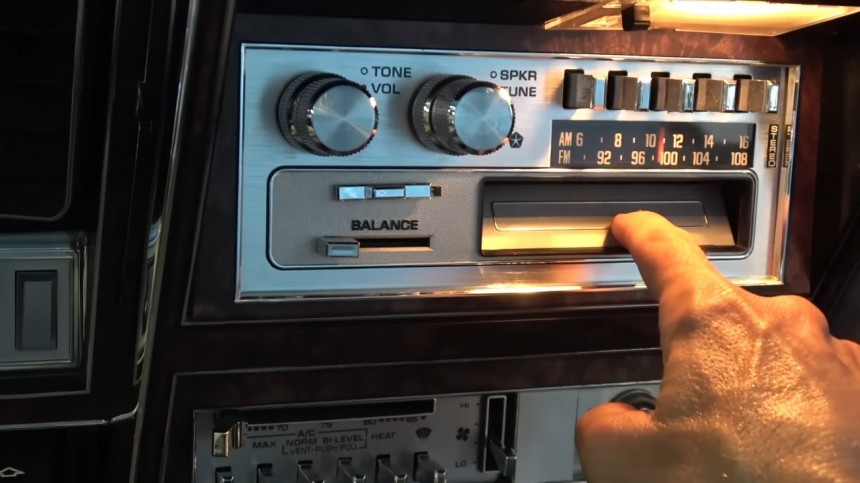Frank Sinatra was a professional-level gearhead who owned many cars throughout his life. Strangely, he is remembered for his side jobs as a crooner, entertainer, mafia elbow-rubber, big-screen sensation, and all-around good guy. A lesser-known side of him is his involvement in helping Chrysler (when the company was fighting bankruptcy) by lending his name to what went down in history as the last Imperial.
Imperial lasted from its inception in 1926 until 1975, first as a model, then as a stand-alone division of Chrysler Corporation (from 1955). In the mid-seventies, the imperial symbol of American automotive greatness was axed. Mopar was sailing some rough financial waters, and the low-volume-selling Imperial was among the victims of budget-saving measures.
It didn’t help much – Chrysler wasn’t doing any better toward the end of the Malaise decade when Henry Ford II fired Lee Iacocca. That happened in July 1978, and Chrysler saw an opportunity and took it – appointing the father of the Mustang as CEO.
Eventually, it paid out – Mopar came back on track a few years later. But before the recovery (which involved a federally guaranteed loan of $1.5 billion, cutting labor costs by $3/hour, and some very successful products like the minivan), Iacocca rolled out a bold project. Ultimately, it failed - a spectacular miss of Hollywoodian proportions.
Take the simile in its literal sense: Chrysler made a car in a superstar’s image. Frank Sinatra accepted to lend his name and image to a personal luxury automobile. The vehicle in question was the Imperial of 1981 – Mopar’s ambitious attempt to slash a market share from General Motors' Cadillac and Ford's Lincoln.
The model was the last Chrysler product under the ‘Imperial’ brand, and it was a short-lived miracle. At the end of 1983, the car was quietly written off, together with the blazon of regality that had adorned so many luxury cars of previous decades.
Chrysler’s last Imperial was launched in 1980 as a 1981 model, and it offered everything standard, short of a power moon roof (which cost extra). Check the gallery and look at the sales brochure, which brags with ‘almost every conceivable comfort and convenience feature available.’
Granted, the luxury Mopar cost almost 20 grand, but Chrysler claimed it was stellar – again, not just a metaphor. Although the bustle-back design was a head-turner, the ace in the sleeve was under the hood. The corporation used space-age technology to power the Imperial, cladding it with electronics developed by the same company that built the computers of the moon-conquering Apollo program.
However, Chrysler must have taken Frank Sinatra’s song `Fly Me to the Moon' literally because it equipped the Imperial with a computer-controlled Electronic Fuel Injection (EFI). On paper, the circuit board was a technological marvel and should have eliminated several motoring issues. The carmaker was so (over)confident in this product, that Lee Iacocca himself advertised it in a two-page dialogue with Frank Sinatra (read it in the gallery).
According to the Mopar boss of the era, the Imperial's continuous-flow Electronic Fuel Injection improved driving efficiency three-fold. ‘Starting is simpler, quicker, surer. Smooth engine performance is immediate as EFI controls the engine idle for smooth running even on the coldest mornings. Balks and stalls are virtually eliminated.’
This was one of the two electronic wonders of the Chrysler Imperial of 1981. The second was the Electronic Communications Center – a fancy and seductive catchphrase for the instruments panel. Zero analog gauges were found in the Imperial.
Also, the Chrysler name, logo, script, badge, or hint was eliminated – the car was simply called the Imperial. It did sport the Pentastar on the hood, steering wheel, and exterior opera lights just behind the door. But it wasn’t a regular, everyday, normal badge – it was a Cartier crystal, the first sign of opulence Chrysler was offering.
The Imperial – touted as "a new kind of personal luxury car - smaller, more fuel efficient, technologically advanced, and built to a remarkably high standard of quality" – had a minor flaw. It lacked proper testing of its vital attribute: drivability. Although every Imperial was checked, inspected, double-checked, and drive-tested before release, the EFI system was missing the all-important development and trial phase.
More accurately, the electronically-controlled injection did not get the chance to be thoroughly put to road tests, and this rush to put it into series production quickly backfired. Even if the overall result was an appealing, tech-rich luxury automobile with an unbelievable offer of standard equipment, there was one thing it failed at - run. Unfortunately, this was the critical aspect it should have nailed to become a triumph.
The Imperials were sent on a five-and-a-half mile test drive before being signed off by a quality inspector – one of many. However, as Chrysler soon found out, the proving grounds were just that and could not mimic all real road situations.
Fuel injection added power, idled effortlessly, improved gas economy, and was environmentally superior to carburetors. But Chrysler never used this particular system on any of its cars before. No living soul on Planet Piston had experimented with the electronically-governed continuous-flow injection. Naturally, mishaps were predictable – and Mopar’s wonder tech soon showed its ugly face.
The space-conquering electronics were prone to magnetic fields generated by high-voltage power lines along roadways. This caused the fuel system to go rich at partial throttle and affected drivability. Chrysler addressed this issue with its two-year/30,000-mile (48,000 km) full warranty.
The rust warranty was even more gutsy – 36 months. The exceptional warranty covered everything – even regular maintenance and included parts, labor, the whole nine yards – except the tires. This was one BIG offer at the time when the industry standard was 12 months).
Of course, when affluent buyers pay $20,000 for promised luxury cars, they fully expect their vehicles to flawlessly ‘luxury’ and ‘car.’ Electronics geeks of the era quickly discovered that the original EFI could be fixed with a lab scope, a PC board soldering hardware, a service manual, and some tech skills.
Rich people, however, use more sophisticated tooling to solve problems: lawyers and lawsuits – and Mother Mopar retorted to the tried-and-tested carburetor (installed for free). Instead of repairing the fuel injection, Chrysler replaced it. Together with the gas tank, exhaust, digital dashboard, and intake manifold.
Not something you’d want a celebrity like Frank Sinatra to complain about. But Ol’ Blue Eyes did – his Chrysler Imperial, the very first off the line – had the same issue as most EFI-equipped models. His car broke down during a public event, and Sinatra was so embarrassed that it nearly broke his friendship with Iacocca.
It’s estimated that every Imperial produced in the three-year run cost Chrysler over $10,000 in warranty claims. The retrofitting of the carburetors allegedly burned a $3,500 hole in the corporation’s budget. Add the 50 technician hours per car, and it becomes obvious why the Imperial was sacked after three years.
Sinatra had agreed to promote the car for a $1/year fee and the courtesy vehicle. The Chairman of the Board of the entertainment industry honored his part of the deal. Chrysler made a special Frank Sinatra Signature Edition Imperial – just 148 came out in ’81, and 279 were released to the general public in 1982.
They all came in Glacier Blue – allegedly to match Frankie’s eyes – and carried a 16-cassette set of Sinatra’s best music albums (curated by the man himself). The Frank Sinatra models were a $1,048 package and were virtually clones – no two were different (at least, not on the outside).
Look at the example in the video below and see what the ‘fs’ (yes, the special badge wasn’t in capitals) was all about. This car –a survivor in pristine shape – has been a one-family possession since new. One detail that sets it apart is the 8-track installed by the factory instead of the standard cassette player.
As we can see, the electronic injection runs fine on this car, and the 318 CID (5.2-liter) motor is one of the quietest V8s ever to come out of Detroit. Remember, this was in the early 80s, and the energy crunch was still in full swing. Odometers on other cars that carried analog dials were restricted to the federally-mandated 85-mph speed limit reading(137 kph), and engines were made to move cars around without burning too much fuel – or tires.
The last Imperial was a 140-hp (142 PS) lux-o-barge with a three-speed automatic (there was no choice of engines or transmissions) and a 2.2:1 rear. For 1982 alone, the differential got a different gearing – 2.4:1. The 245 lb-ft (332 Nm) torque rating wasn’t precisely neck-snapping (the car wasn’t aimed at that segment of the public, to begin with).
At almost 4,000 lbs (1,8 tons) and 213 inches in length (5.4 meters), the Imperial offered 112.7 inches between axles (2.86 meters). The ‘fs’ edition presented mouse fur padding on the doors, Mark Cross leather interior (all blue, keyed to the exterior), and a small gold plaque with the ‘fs’ badging on the rear.
But the computer failures were a big no-no for buyers, and production figures only rose to 12,385 units for all four years of production (1980-assembled cars were sold as 1981 models). Consequently, the Imperial failed spectacularly, and it never came back to life – as a brand – again. The nameplate was revived one last time in the 90s, but as a Chrysler model, before being sent to the history books.
It didn’t help much – Chrysler wasn’t doing any better toward the end of the Malaise decade when Henry Ford II fired Lee Iacocca. That happened in July 1978, and Chrysler saw an opportunity and took it – appointing the father of the Mustang as CEO.
Eventually, it paid out – Mopar came back on track a few years later. But before the recovery (which involved a federally guaranteed loan of $1.5 billion, cutting labor costs by $3/hour, and some very successful products like the minivan), Iacocca rolled out a bold project. Ultimately, it failed - a spectacular miss of Hollywoodian proportions.
The model was the last Chrysler product under the ‘Imperial’ brand, and it was a short-lived miracle. At the end of 1983, the car was quietly written off, together with the blazon of regality that had adorned so many luxury cars of previous decades.
Chrysler’s last Imperial was launched in 1980 as a 1981 model, and it offered everything standard, short of a power moon roof (which cost extra). Check the gallery and look at the sales brochure, which brags with ‘almost every conceivable comfort and convenience feature available.’
However, Chrysler must have taken Frank Sinatra’s song `Fly Me to the Moon' literally because it equipped the Imperial with a computer-controlled Electronic Fuel Injection (EFI). On paper, the circuit board was a technological marvel and should have eliminated several motoring issues. The carmaker was so (over)confident in this product, that Lee Iacocca himself advertised it in a two-page dialogue with Frank Sinatra (read it in the gallery).
According to the Mopar boss of the era, the Imperial's continuous-flow Electronic Fuel Injection improved driving efficiency three-fold. ‘Starting is simpler, quicker, surer. Smooth engine performance is immediate as EFI controls the engine idle for smooth running even on the coldest mornings. Balks and stalls are virtually eliminated.’
Also, the Chrysler name, logo, script, badge, or hint was eliminated – the car was simply called the Imperial. It did sport the Pentastar on the hood, steering wheel, and exterior opera lights just behind the door. But it wasn’t a regular, everyday, normal badge – it was a Cartier crystal, the first sign of opulence Chrysler was offering.
The Imperial – touted as "a new kind of personal luxury car - smaller, more fuel efficient, technologically advanced, and built to a remarkably high standard of quality" – had a minor flaw. It lacked proper testing of its vital attribute: drivability. Although every Imperial was checked, inspected, double-checked, and drive-tested before release, the EFI system was missing the all-important development and trial phase.
The Imperials were sent on a five-and-a-half mile test drive before being signed off by a quality inspector – one of many. However, as Chrysler soon found out, the proving grounds were just that and could not mimic all real road situations.
Fuel injection added power, idled effortlessly, improved gas economy, and was environmentally superior to carburetors. But Chrysler never used this particular system on any of its cars before. No living soul on Planet Piston had experimented with the electronically-governed continuous-flow injection. Naturally, mishaps were predictable – and Mopar’s wonder tech soon showed its ugly face.
The rust warranty was even more gutsy – 36 months. The exceptional warranty covered everything – even regular maintenance and included parts, labor, the whole nine yards – except the tires. This was one BIG offer at the time when the industry standard was 12 months).
Of course, when affluent buyers pay $20,000 for promised luxury cars, they fully expect their vehicles to flawlessly ‘luxury’ and ‘car.’ Electronics geeks of the era quickly discovered that the original EFI could be fixed with a lab scope, a PC board soldering hardware, a service manual, and some tech skills.
Not something you’d want a celebrity like Frank Sinatra to complain about. But Ol’ Blue Eyes did – his Chrysler Imperial, the very first off the line – had the same issue as most EFI-equipped models. His car broke down during a public event, and Sinatra was so embarrassed that it nearly broke his friendship with Iacocca.
It’s estimated that every Imperial produced in the three-year run cost Chrysler over $10,000 in warranty claims. The retrofitting of the carburetors allegedly burned a $3,500 hole in the corporation’s budget. Add the 50 technician hours per car, and it becomes obvious why the Imperial was sacked after three years.
They all came in Glacier Blue – allegedly to match Frankie’s eyes – and carried a 16-cassette set of Sinatra’s best music albums (curated by the man himself). The Frank Sinatra models were a $1,048 package and were virtually clones – no two were different (at least, not on the outside).
Look at the example in the video below and see what the ‘fs’ (yes, the special badge wasn’t in capitals) was all about. This car –a survivor in pristine shape – has been a one-family possession since new. One detail that sets it apart is the 8-track installed by the factory instead of the standard cassette player.
The last Imperial was a 140-hp (142 PS) lux-o-barge with a three-speed automatic (there was no choice of engines or transmissions) and a 2.2:1 rear. For 1982 alone, the differential got a different gearing – 2.4:1. The 245 lb-ft (332 Nm) torque rating wasn’t precisely neck-snapping (the car wasn’t aimed at that segment of the public, to begin with).
At almost 4,000 lbs (1,8 tons) and 213 inches in length (5.4 meters), the Imperial offered 112.7 inches between axles (2.86 meters). The ‘fs’ edition presented mouse fur padding on the doors, Mark Cross leather interior (all blue, keyed to the exterior), and a small gold plaque with the ‘fs’ badging on the rear.
But the computer failures were a big no-no for buyers, and production figures only rose to 12,385 units for all four years of production (1980-assembled cars were sold as 1981 models). Consequently, the Imperial failed spectacularly, and it never came back to life – as a brand – again. The nameplate was revived one last time in the 90s, but as a Chrysler model, before being sent to the history books.
